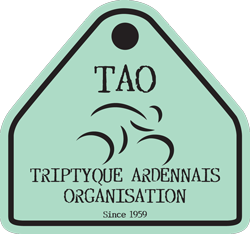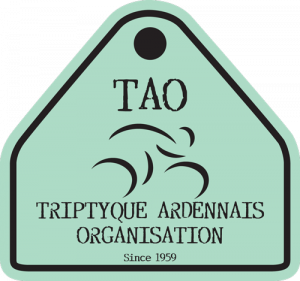Unlocking Chance: How Ancient Treasures and Modern Games Connect
1. Introduction: The Intersection of Ancient Treasures and Modern Gaming
The allure of ancient civilizations has captivated humanity for centuries. From the mysterious tombs of Egypt to the intricate jewelry of Mesopotamia, artifacts from the distant past evoke curiosity about our ancestors’ beliefs, customs, and achievements. This fascination fuels a robust cultural interest, inspiring countless stories, artworks, and educational pursuits.
Simultaneously, the rise of modern gaming has transformed how we engage with history and mythology. Video games and slot machines often draw from these rich cultural symbols, creating immersive environments that blend entertainment with education. This intersection offers a unique lens to explore how ancient themes are reinterpreted through contemporary mechanics.
This article aims to examine the deep connections between ancient treasures, symbolic representations, and the mechanics of modern chance-based games, illustrating how these elements mutually enrich each other—culminating in engaging experiences like the popular slot game, one tap.
Table of Contents
- Introduction
- Historical Significance of Ancient Treasures and Symbols
- Evolution of Chance and Gambling: From Ancient Practices to Digital Games
- Mechanics of Modern Slot Games: Connecting Chance with Themes
- Case Study: «Mummy’s Jewels» — An Example of Ancient Themes in Modern Slots
- The Educational Value of Combining History with Gaming
- Non-Obvious Connections: Mathematics, Probability, and Cultural Significance
- Ethical and Cultural Considerations in Theme Integration
- Future Trends: Merging Ancient Heritage with Innovative Gaming Technologies
- Conclusion
2. Historical Significance of Ancient Treasures and Symbols
Ancient artifacts such as mummies, jewelry, and religious symbols held profound cultural and spiritual significance. For instance, in ancient Egypt, mummies were believed to serve as vessels for the soul’s journey into the afterlife, reflecting complex religious beliefs about existence beyond death. Jewelry often signified status, protection, or divine favor, with specific motifs carrying symbolic meanings.
A prominent example is the Egyptian god Anubis, depicted as a jackal-headed figure associated with mummification and the afterlife. Such symbols encapsulate themes of protection, mystery, and eternal life, which resonate deeply in modern storytelling and game design. Developers frequently incorporate these iconic elements to evoke authenticity and intrigue, as seen in many slot themes that utilize Egyptian motifs.
| Symbol | Cultural Meaning | Modern Usage |
|---|---|---|
| Anubis | God of mummification and afterlife | Symbol in Egyptian-themed slots and stories |
| Scarabs | Symbol of rebirth and protection | Common motif in jewelry and slot symbols |
| Jewelry | Signifies status, protection, divine favor | Used as decorative symbols in games |
3. Evolution of Chance and Gambling: From Ancient Practices to Digital Games
The concept of luck and chance is as old as civilization itself. Early societies engaged in activities like casting bones, dice, or spinning wheels to make decisions or seek fortune. For example, in ancient China, rudimentary dice dating back over 4,000 years were used for gambling and divination.
Fast forward to the modern era, gambling mechanics have become sophisticated, with casinos and online platforms offering a variety of chance-based games. Slot machines evolved from mechanical devices to digital platforms, integrating themes from history and mythology to enhance appeal. These themed slots often incorporate ancient symbols, creating a sense of adventure and mystique that appeals to players’ curiosity.
The integration of historical themes into contemporary games serves not only as entertainment but also as a bridge connecting players to distant cultures, making the experience both fun and educational.
4. Mechanics of Modern Slot Games: Connecting Chance with Themes
Modern slot games operate on core mechanics such as spinning reels, paylines, and winning combinations. The reels are digital or mechanical wheels with symbols, and players aim to land matching symbols across active paylines. The introduction of multiple paylines and “243 ways” to win has significantly increased the chances of forming winning combinations, making gameplay more engaging.
The “243 ways” mechanic, for example, allows for winning combinations on adjacent reels regardless of line patterns, simplifying gameplay and increasing excitement. This mechanic is often paired with thematic symbols—like ancient treasures, gods, or artifacts—to deepen immersion.
Themes such as ancient Egypt are integrated through symbols like scarabs, pharaohs, and jewelry, which not only make the game visually appealing but also enhance player engagement by creating a narrative layer that complements the mechanics.
5. Case Study: «Mummy’s Jewels» — An Example of Ancient Themes in Modern Slots
The game «Mummy’s Jewels» exemplifies how ancient Egyptian themes can be woven into modern slot mechanics. Its visual design features hieroglyphs, golden jewelry, and mummies, creating an immersive environment reminiscent of archaeological adventures. Such design choices serve to evoke curiosity and excitement about ancient history.
Symbols like mummies, scarabs, and Egyptian gods are central to the game’s narrative, reinforcing the theme. The mechanics include features like free spins, which simulate tomb explorations, and max win caps that maintain game balance. These elements work together to deepen the thematic experience while ensuring fair play.
This game demonstrates how a well-designed slot can be both entertaining and educational, sparking interest in ancient cultures while providing a chance to win.
6. The Educational Value of Combining History with Gaming
Games like «Mummy’s Jewels» serve as informal educational tools, introducing players to symbols, stories, and historical contexts of ancient civilizations. When designed accurately, these games can spark curiosity about archaeology, ancient art, and mythology.
The importance of cultural accuracy and respectful representation cannot be overstated. Incorporating authentic symbols and stories helps avoid stereotypes and promotes a genuine appreciation of history. Such thoughtful design encourages players to explore further, perhaps leading them to formal studies or visits to museums.
In this way, modern games transcend mere entertainment, becoming gateways to learning about our shared human past.
7. Non-Obvious Connections: Mathematics, Probability, and Cultural Significance
Understanding probability is fundamental to both game design and player strategy. The “243 ways” mechanic, for example, simplifies the odds calculation by allowing nearly any symbol combination to result in a win, which increases player engagement. Analyzing these odds involves understanding the probability distribution of symbols appearing on reels and how they combine to produce wins.
Max win caps, often set to ensure game fairness and manage payout ratios, also exemplify how mathematical principles underpin game mechanics. They prevent excessive payouts that could destabilize the game’s economy, maintaining a balanced experience that respects both entertainment and fairness.
Using ancient themes like Egyptian symbols offers an engaging way to teach probability concepts. For instance, recognizing that certain symbols are rarer or more valuable can help players grasp how randomness and odds interplay—making learning about chance both visual and practical.
8. Ethical and Cultural Considerations in Theme Integration
While integrating ancient cultures into modern entertainment enhances appeal, it raises important ethical questions. Respectful representation entails accurate depiction of symbols and stories, avoiding stereotypes or cultural misappropriation. Developers should collaborate with cultural experts to ensure authenticity and sensitivity.
Striking a balance between entertainment and education involves honoring the source cultures while providing engaging experiences. For example, depicting Egyptian mythology with reverence rather than sensationalism fosters respect and promotes genuine understanding.
Responsible theme integration not only enriches the gaming experience but also upholds cultural dignity, preventing superficial or stereotypical portrayals that can perpetuate misinformation.
9. Future Trends: Merging Ancient Heritage with Innovative Gaming Technologies
Emerging technologies like virtual reality (VR) and augmented reality (AR) are opening new horizons for exploring ancient worlds interactively. Imagine stepping inside an Egyptian tomb, examining hieroglyphs firsthand, or participating in archaeological digs—all through immersive digital environments.
Interactive educational games inspired by ancient treasures can further deepen understanding, combining storytelling, puzzles, and chance mechanics in ways that captivate players while teaching history. Platforms are increasingly integrating storytelling with gameplay, allowing players to experience mythologies and artifacts in meaningful contexts.
These innovations promise to strengthen the bond between history and chance, making learning an engaging adventure and preserving cultural heritage through cutting-edge technology.
10. Conclusion: The Symbiotic Relationship Between Ancient Treasures and Modern Games
Throughout history, symbols of ancient civilizations have served as powerful tools for storytelling, cultural preservation, and education. Modern gaming continues this legacy by transforming these symbols into immersive, chance-based experiences that entertain and inform. The game «Mummy’s Jewels» exemplifies how timeless principles—such as storytelling, symbolism, and fair mechanics—remain relevant in today’s digital landscape.
“The integration of ancient symbols into modern games offers a bridge across time, connecting us with our past while engaging us with the thrill of chance.”
As technology advances, the potential for even more meaningful and respectful representations of ancient heritage grows. By combining education with entertainment, these games can inspire curiosity, foster cultural appreciation, and deepen our understanding of human history—making the quest for knowledge as exciting as the chance to win.





